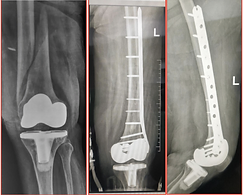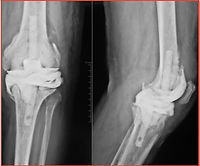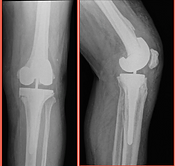Revision surgeries are rarely needed after joint replacement. These are done in patients that develop infection, sustain a fracture around the implant, or require a worn-out part to be changed.
Some revision surgeries may be straightforward procedures like changing a worn-out component while others may be complex procedures involving fractures of the bone around the implant.

Infections
Infections of the artificial joint can range from simple to complex. A simple wash and debridement may suffice for some whereas others may need multiple surgical interventions to control the infection. Revision surgeries are highly individualized as each case presents unique challenges. Infections may be treated by a single-stage or two-stage surgery. For early infections, with susceptible bacteria a single-stage revision is an option.Most infections though are treated by a two-stage revision surgery. In the first stage, the implants are removed along with infective tissues and an antibiotic-loaded spacer is placed to create a temporary joint. Antibiotics are then given for a period of 6-12 weeks. Once it is confirmed that the infection has been resolved, the second-stage surgery is performed. In this the antibiotic-spacer is removed and final revision implants are fixed to recreate the artificial joint.

